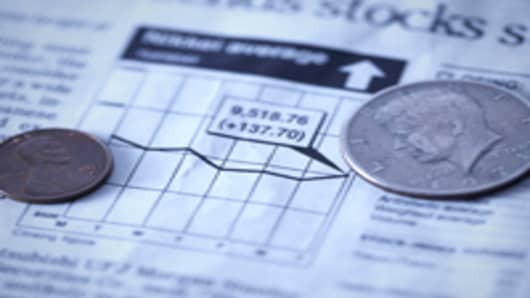Small investors were forced to sell both stocks and real estate at steep losses. At the same time, they were forced to reduce spending to conserve cash. That deleveraging is continuing.
The baby boomers are not young anymore. The average boomer is 56. They were killed in the dot-com bust in 2000. They were devastated in 2008.
They cannot afford to be devastated again. Many have nothing to lose. Literally.
What about the other big trading entities? Institutional firms (pension funds, etc.) are trading less because they are uncertain about the direction of the markets.
Prop trading desks are being dismantled.
And high-frequency traders are dramatically lowering their trading volumes because the low volatility leaves them with far less opportunity to make money. Their machines — literally — are turning off. (More: Ex-NASA Consultant: The Real Problem With High-Frequency Trading)
Depressed enough? There is something you can do about it. You can bet against it.
For all the traders out there lamenting the lack of volatility---there's an exchange traded product for that!
That's right: there is an ETN (Exchange Traded Note) that trades on the inverse of the Volatility Index (VIX) — so when volatility is low, it's up. It's the Credit Suisse Inverse VIX, and it's up about 15 percent in the last week to its highest level since August.
It is essentially the inverse of a Barclay ETN, the VXX.
There are other choices in inverse volatility that are out there as well.
The downside to this: you are buying relatively high. You have to believe volatility is going to remain low. And there are some quirks in these products you need to be aware of. But the choices are there.
Another play for those looking for action: betting against Treasurys. This is starting to pick up steam. On a day with low volume everywhere, a couple of other ETFs bucked the trend. The ProShares Ultrashort 20+ Treasury, essentially a bet against long-term Treasurys, traded nearly 12 million shares, 50 percent above its normal volume.
One reason seems to be continuing interest in corporate bonds. The iShares Barclays 1-3 Year Credit Bond, a short-term investment grade corporate bond ETF, is just shy of its highest level since it began trading in 2007.
And volumes continue to be strong in high-yield ETFs like the iShares High Yield Corporate Bond and the SPDR Barclays High Yield Bond , both of which are near 4-year highs, on those juicy 7 percent yields...yum!
The iShares S&P U.S. Preferred Stock ETF, with a yield of 5.8 percent, is also near a multi-year high.
Even emerging market bonds are getting attention. The iShares JPM USD Emerging Markets Bond ETF, with a yield of 4.5 percent, is near the highest level since it began trading in 2008.
_____________________________
Bookmark CNBC Data Pages:
_____________________________
Want updates whenever a Trader Talk blog is filed? Follow me on Twitter: twitter.com/BobPisani.
Questions? Comments? tradertalk@cnbc.com



